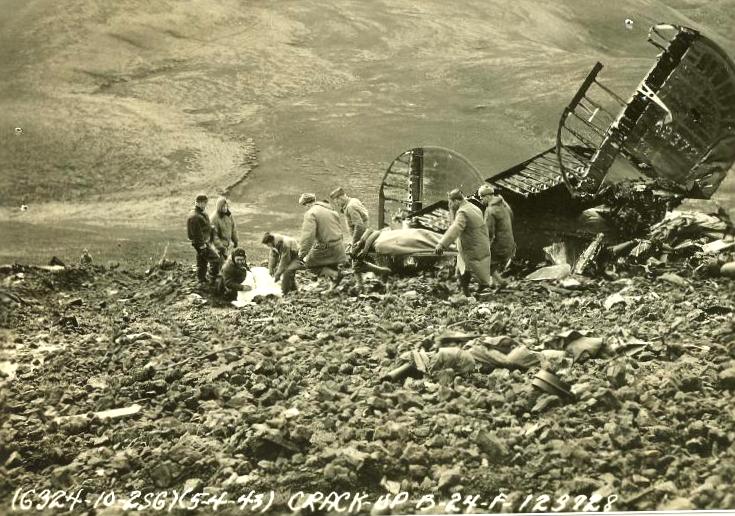May 3 in U.S. military history
[Featured image: the wreckage of THE B-24 bomber named HOT STUFF. Her Eighth Air Force crew was the first to reach the milestone of 25 missions. 13 perish in the crash, leaving only one survivor: tail gunner, Staff Sgt. George Eisel.]
1898: Following the Battle of Manila Bay, Marines from the cruisers USS Baltimore (C-3) and USS Raleigh (C-8) raise the Stars and Stripes for the first time in the Philippines over Cavite, the historical capital.
1923: 26 hours and 50 minutes after taking off in New York, Army Air Corps first lieutenants Oakley Kelly and John Macready touch down at Rockwell Field, San Diego, becoming the first aviators to fly non-stop across the United States. The specially modified Fokker T-2 passenger plane averaged a blistering 92 mph.
1942: Off the Florida coast, two German U-boats each sink a cargo ship, killing a total of 23 sailors. U-109 heads back to the German sub pens at Lorient, France after her attack and U-564 will damage another two vessels over the next two days. The Royal Air Force will sink both subs the following year.
1943: Lt. Gen. Frank M. Andrews, the commander of all U.S. Forces in the European Theater, is killed when the B-24 Liberator bomber carrying the former cavalry trooper and pilot during World War I to Iceland on an inspection tour crashes. Gen. George Marshall names Lt. Gen. Jacob L. Devers as his replacement.
Hot Stuff, the plane carrying Andrews was the first U.S. plane to complete 25 bombing missions. However since Hot Stuff crashed before returning to the States, the B-17 Memphis Belle will become more widely known — despite accomplishing their feat three and a half months later.
1946: Prosecution of 28 Japanese military and political leaders begin at the War Ministry Office in Tokyo. After two-and-a-half years, 25 of the 28 high-ranking officials (one is determined mentally unfit and two die during the trial) are found guilty of war crimes and crimes against humanity. Seven are executed, including the prime minister and Gen. Iwane Matsui, who oversaw the Japanese military’s Rape of Nanking.
1951: The Senate Armed Services and Foreign Relations committees begin closed-session hearings into the dismissal of Gen. Douglas MacArthur. The five-star general served as Commander-in-Chief of the United Nations Command in Korea until being relieved of command in April for his insubordination and disrespect to President Harry Truman. MacArthur will retire after serving the country for 52 years.
1952: Air Force Lt. Col Joseph O. Fletcher, piloting a C-47 with skis for landing gear – along with fellow USAF Lt. Col. William P. Benedict and scientist Dr. Albert P. Crary – become the first Americans to land at the geographic North Pole. That day, Crary becomes the first person to have stood on both the North and South Poles.
3,600 miles due south, Maj. Donald E. Adams and Capt. Robert T. Latshaw, Jr. each splash two enemy MiGs on this day, becoming the U.S. Air Force’s 13th and 14th aces of the Korean War. Both pilots had flown during World War II and both would die in accidental plane crashes following this war.
1965: Lead elements of the 173rd Airborne Brigade depart Okinawa for South Vietnam, becoming the first Army ground combat units deployed in the Vietnam War. The “Sky Soldiers” will make the only major combat parachute jump of the war in February 1967 during Operation JUNCTION CITY – the mission to locate the North Vietnamese political and military headquarters for South Vietnam.
1975: USS Nimitz (CVN-68) is commissioned at Naval Station Norfolk, Va. by President Gerald R. Ford. Although slightly shorter than the USS Enterprise (CVN-65), the new Nimitz Class carriers are the largest warships ever built – displacing over 100,000 tons.
Pres. Ford, who served as a Naval Reserve officer aboard an aircraft carrier in the Pacific Theater during World War II, states “Only in America can we build this machine; there’s nothing else like it in the world.”
